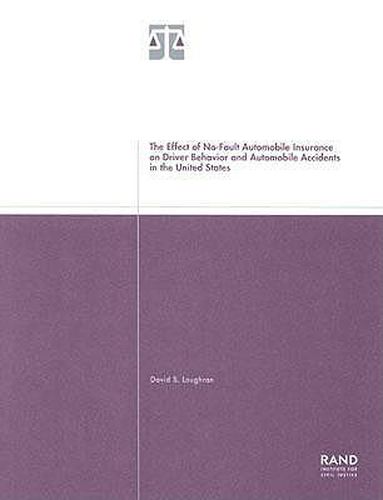Readings Newsletter
Become a Readings Member to make your shopping experience even easier.
Sign in or sign up for free!
You’re not far away from qualifying for FREE standard shipping within Australia
You’ve qualified for FREE standard shipping within Australia
The cart is loading…






No-fault auto insurance opponents frequently argue that no-fault may ultimately lead to higher auto insurance costs by reducing drivers incentives to drive carefully and thereby increasing the accident rate. The intuition behind this criticism of no-fault is simple: No-fault auto insurance lowers the cost of driving negligently by limiting first-party liability for the injuries suffered by third-parties in auto accidents. This report evaluates this criticism of no-fault by examining trends in fatal and non-fatal automobile accidents rates and rates of driver negligence in the United States between 1967 and 1989. Contrary to some earlier research, this report finds no evidence that the adoption of no-fault auto insurance between 1971 and 1976 in 16 states increased fatal accident rates in those states. This report also finds no correlation between the presence of no-fault auto insurance and a state’s overall accident rate or rate of driver negligence.
$9.00 standard shipping within Australia
FREE standard shipping within Australia for orders over $100.00
Express & International shipping calculated at checkout
No-fault auto insurance opponents frequently argue that no-fault may ultimately lead to higher auto insurance costs by reducing drivers incentives to drive carefully and thereby increasing the accident rate. The intuition behind this criticism of no-fault is simple: No-fault auto insurance lowers the cost of driving negligently by limiting first-party liability for the injuries suffered by third-parties in auto accidents. This report evaluates this criticism of no-fault by examining trends in fatal and non-fatal automobile accidents rates and rates of driver negligence in the United States between 1967 and 1989. Contrary to some earlier research, this report finds no evidence that the adoption of no-fault auto insurance between 1971 and 1976 in 16 states increased fatal accident rates in those states. This report also finds no correlation between the presence of no-fault auto insurance and a state’s overall accident rate or rate of driver negligence.